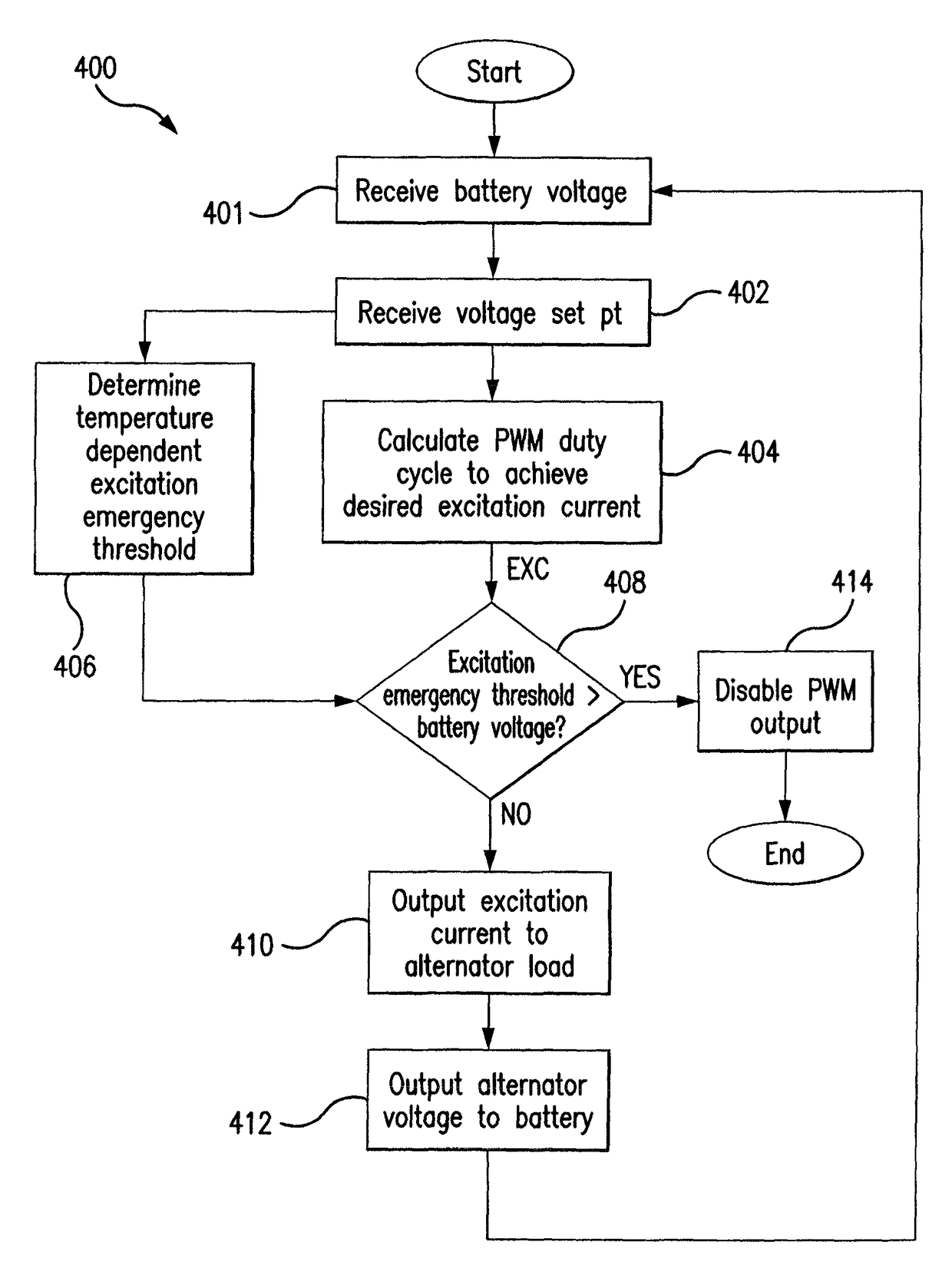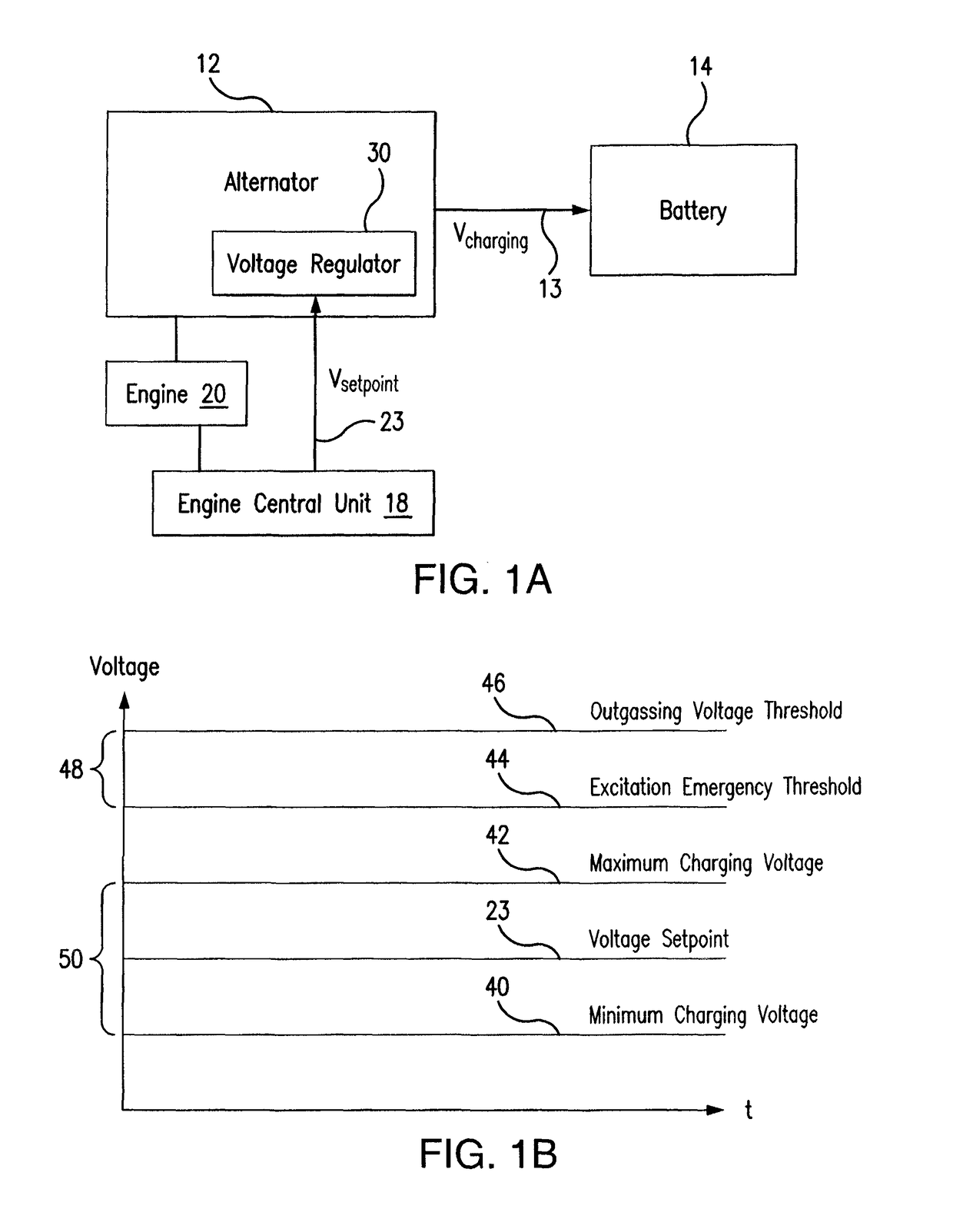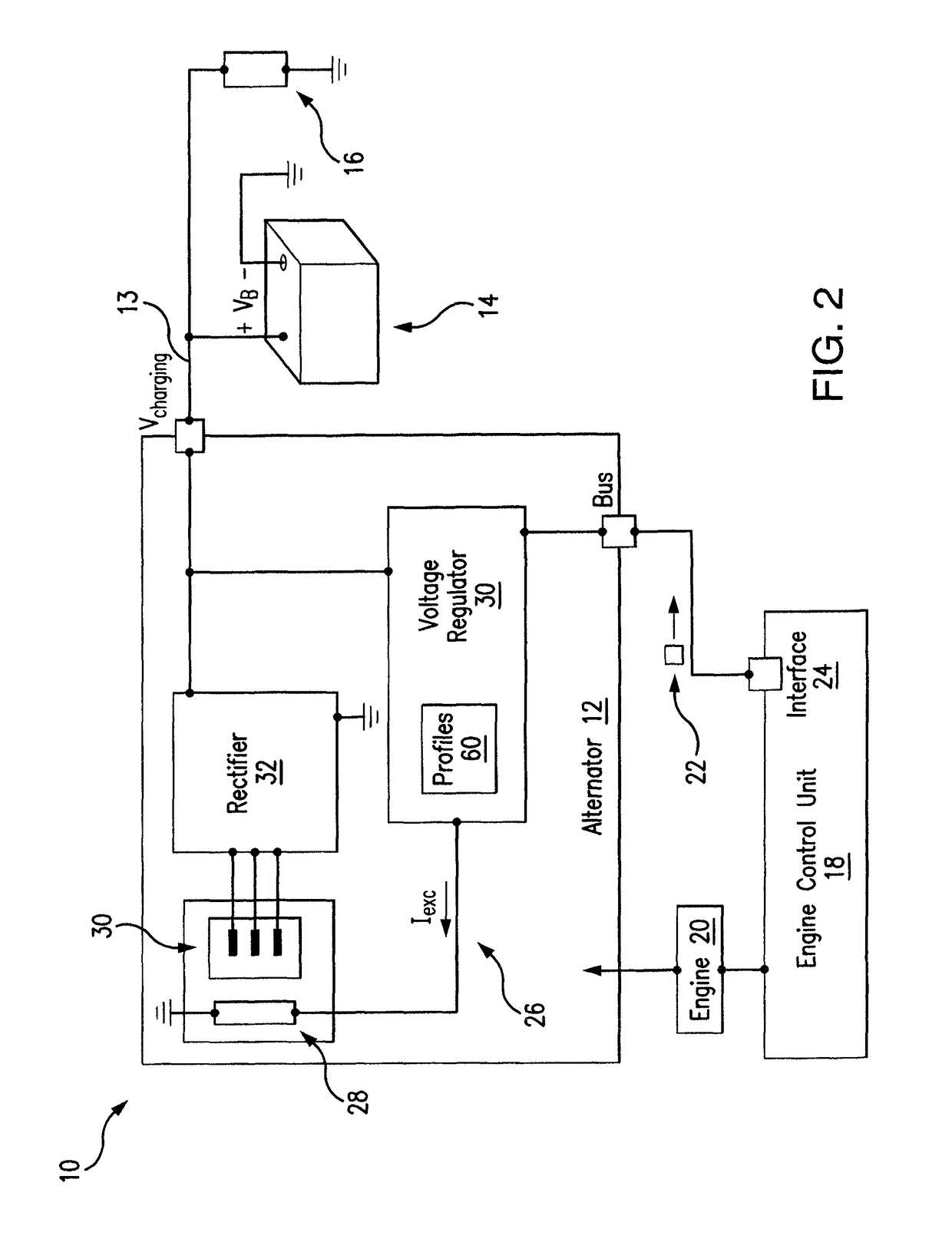Alternator control with temperature-dependent safety feature
a safety feature and control technology, applied in the direction of electric generator control, battery/fuel cell control arrangement, safety/protection circuit, etc., can solve the problems of outgassing and/or undesired capacity loss, and achieve the effects of increasing charging efficiency, reducing risk and/or eliminating risk
- Summary
- Abstract
- Description
- Claims
- Application Information
AI Technical Summary
Benefits of technology
Problems solved by technology
Method used
Image
Examples
Embodiment Construction
[0018]The present disclosure provides methods and systems for alternator control with a temperature-dependent safety feature. For example, an alternator may be equipped with a safety feature that may be enabled or triggered in the event that the alternator output voltage surpasses a particular safety and / or emergency threshold. The teachings of the disclosure recognize that safe alternator output voltages, which may be used to charge a battery, may vary according to battery temperature and thus the present disclosure recognizes that it may be beneficial to provide an excitation emergency threshold that varies according to battery temperature.
[0019]Specific embodiments of the present disclosure and its advantages are best understood by referring to FIGS. 1A through 5, wherein like numerals refer to like and corresponding parts of various drawings.
[0020]FIG. 1A is a block diagram showing a system that may benefit from the teachings of the present disclosure. In FIG. 1A, an alternator ...
PUM
 Login to View More
Login to View More Abstract
Description
Claims
Application Information
 Login to View More
Login to View More - R&D
- Intellectual Property
- Life Sciences
- Materials
- Tech Scout
- Unparalleled Data Quality
- Higher Quality Content
- 60% Fewer Hallucinations
Browse by: Latest US Patents, China's latest patents, Technical Efficacy Thesaurus, Application Domain, Technology Topic, Popular Technical Reports.
© 2025 PatSnap. All rights reserved.Legal|Privacy policy|Modern Slavery Act Transparency Statement|Sitemap|About US| Contact US: help@patsnap.com



